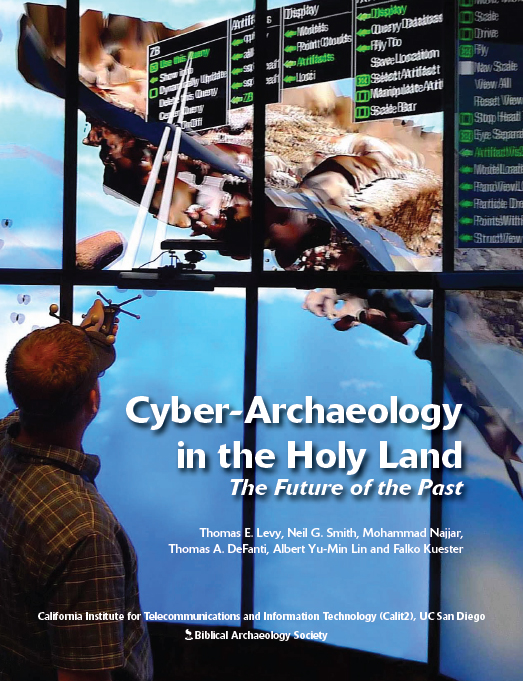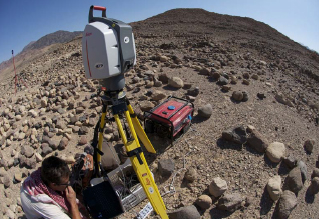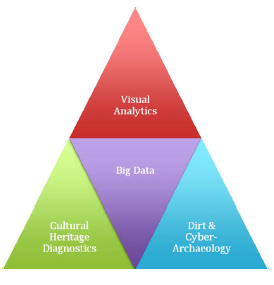E-Book Is Logical Next Step for Publicizing Brave New World of Cyber-Archaeology
San Diego, Dec. 19, 2012 -- Given his profession’s focus on the past, it may be surprising for an archaeologist to skip a printed edition in favor of publishing a digital e-book instead, but that’s exactly what Tom Levy has done. The University of California, San Diego professor of anthropological archaeology in the Division of Social Sciences has teamed with the Biblical Archaeology Society (BAS) to launch “Cyber-Archaeology in the Holy Land: The Future of the Past” as a free eBook.
|
“My research group at Calit2 has produced quite a few peer-reviewed papers concerning cyber-archaeology over the past three years,” said Levy, who co-authored the digital tome with Jordanian archaeologist Mohammad Najjar, UC San Diego archaeology alumnus Neil G. Smith (Ph.D. , ’11), and three scientists and engineers based in Calit2 – Thomas A. DeFanti, Falko Kuester and Albert Yu-Min Lin. ““We felt that it was time to get our message out to as many interested people as possible.”
Levy and his co-authors are all affiliated with the Calit2-based Center of Interdisciplinary Science for Art, Architecture and Archaeology (CISA3). They submitted a manuscript originally for publication in BAS’s Biblical Archaeology Review, but it far exceeded the journal’s guidelines for length. BAS suggested instead publication in its new line of e-books.
Levy’s first foray into e-books was also a result of another 21st Century, high-tech rite of passage: a TED talk. Specifically, he was invited earlier this year to deliver a talk to TEDx Sonoma County. The topic: an archaeologist’s “sense of place.”
|
"Cyber-archaology is at the heart of CISA3's Integrative Graduate Education and Research Traineeship (IGERT) program, developing a systematic approach toward cultural heritage diagnostics and preservation, anchored in science and engineering,” said co-author and CISA3 director Falko Kuester. “Our team is creating the needed methodology, tools and devices for data acquisition, curation, analysis and dissemination – allowing historical sites and artifacts to be studied holistically and correlated across time and space.”
Eighteen Ph.D. students and more than 40 undergraduate students from the sciences, engineering and the arts “are part of our team that is creating a future for the past,” added Kuester.
As described in the e-book, cyber-archaeology provides objective insights into some of the most heavily debated subjects in Biblical archaeology, including the historicity of Biblical kings David and Solomon (the focus of a National Geographic/NOVA documentary, “Quest for Solomon’s Mines,” about Levy’s excavations in the Faynan region of southern Jordan).
|
Readers of the e-book can learn how archaeologists can collect and curate data more accurately and in real time. The book also explains how new visualization technologies allow anyone to see a site as it was excavated in the field from start to finish, thereby enabling researchers to collaborate, discuss and propose questions together in a full immersive environment thousands of miles away – as if they were standing at the site during the excavation. “We all think in three dimensions, so visualizing archaeological data in 3D opens up new opportunities for understanding the world around us,” said Levy.
Cyber-archaeology is still in its infancy, and the Biblical Archaeology Society e-book may also serve as a primer for newcomers to the field, whether academics, or the public at large. “I think it is a clear and useful summary of where cyber-archaeology is at in 2012,” added Levy. “Hopefully readers will also discern the role that Calit2 and UC San Diego played in leading the way as part of our mission to harness technology for safeguarding cultural heritage.”
Related Links
Cyber-Archaeology eBook
Biblical Archaeology Review
CISA3 Archaeology
IGERT TEECH
Media Contacts
Doug Ramsey, 858-822-5825, dramsey@ucsd.edu or Inga Kiderra, ikiderra@ucsd.edu



